Back to Blood: A Novel Read online
Page 9
“But Camilito! My Camilito! There was such a crash! Oh, my God!”
“It’s nothing, Lourdes.” I, Camilo’s new soft, husky voice. “Just a little family… disagreement.” With that he pinned Nestor again with his ironic, tongue-in-cheek, teeth-baring stare, interrupting it only long enough to say again, “Just… a… little… family… disagreement…”
Now all four of them had their eyes pinned on Nestor. Yeya had become hysterical.
“What did you do to your father?! Your own father! It wasn’t enough, what you did to that poor boy yesterday? Now you have to turn on your own father?!”
Nestor was bewildered… couldn’t get a word out… just stood there with his mouth open. His mother was looking at him in a way she had never looked at him in his whole life! Even Mami!
When he found his voice, he was almost as hysterical as Yeya. “Tell her the truth, Dad! Tell her what really happened! You’re—you’re—twisting it all around! In the name of God, tell the truth! Dad, you’re—you’re—”
He didn’t help his own cause by breaking it off right there, wheeling about, showing them his back, rushing to his room to pick up his car keys—bolting for the front door without so much as glancing at the rest of his family.
Bang—he slammed the front door of La Casita de Camacho behind him.
3
The Daring Weak Man
Barely two hours later appeared an Edward T. Topping IV no one in the Miami Herald city room had ever seen before. Usually straight down the middle of his forehead, from his brow to his nose, ran a crevice… a crevice in the flesh of a man worrying about just how many people on the editorial staff, what was left of it, resented him. But this morning he was grinning… grinning a grin so broad, it raised his eyebrows as high as they would go… popped his eyes wide open… made his rosy cheeks well up atop each cheekbone, like Santa Claus’s. The ditch had disappeared. The eyes glittered.
“Take a look at it, Stan! Take a look at it, a really good look. You know what you’re looking at?”
He was standing in the middle of his office, which opened out into the city room. Standing, he was, not sitting halfway hidden within the cocoon of a high-backed Contract Modern swivel chair up against a kidney-shaped Contract Modern desk, the way he usually was. Not only that, he stood with his back to the wall of glass that provided him, as editor in chief, with the View… of all that was glamorous in Miami… the royal palm trees, the Mandarin Oriental Hotel, the royal palm trees, Brickell Avenue, the royal palm trees, Biscayne Bay, Brickell Key, Key Biscayne, the Venetian Isles, Indian Creek, Star Island, Miami Beach, and beyond that the Atlantic Ocean’s great parabolic curve at the horizon, 180 degrees’ worth of sun-bleached light-blue tropical sky, and the royal palm trees. No, at the moment he only had eyes for this morning’s Herald, which he held before him the way one might display a painting, full length, top to bottom, showing off the front page.
“Here it is! You’re looking at real journalism! Real journalism, Stan!”
Stan, namely Stanley Friedman, a thin, bony man in his forties, six feet tall but with atrocious posture that made his chest look concave and him six inches shorter—City Editor Stan watched this performance from an armchair barely four feet away. Stan had a squint-eyed look on his face. Ed Topping took it to be the look of a man in a state of wonder over what he has helped create: this!… this morning’s Miami Herald! If the truth be told, Stanley Friedman had no room in his heart or on his face for Topping’s “real journalism.” All he wondered about was how long he would still have a job. Two weeks ago the Mob, short for Chicago Mob, as everyone in the city room now referred to the six men the Loop News Corporation had dispatched from Chicago to take over the Herald, had fired another 20 percent of the paper’s workforce, bringing the total to 40 percent. Like City Editor Stan, everybody who remained felt as if he were hanging on to his job by his fingernails. Morale was—what morale? Everybody heeded Edward T. Topping IV’s words only to detect signs of impending doom. Impending Doom was what City Editor Stan’s eyes were squinting at. In fact, he was in no danger. The Mob had to have a local as city editor, someone whose memory bank was already stuffed with information he knew by heart about the entire metropolitan area, the street layout in detail, all fourteen police jurisdictions and their boundaries—very important, knowing the cops—the players, very much including all policy-making political officeholders, all of them, plus the celebrities, particularly the minor ones who felt more comfortable in Miami than in Los Angeles and New York… and… the nationalities and their turfs… Little Havana and Big Hialeah… Little Haiti, Little Caracas, also known as Westonzuela, Mother Russia (Sunny Isles and Hallandale), the Hershey Highway, that being the cops’ nickname for the Anglo enclave of South Beach otherwise known as “gay”… There was no end to it, and a city editor had to know who hated whom and why—
“Just look at that makeup, Stan!” Ed was saying, eyes still bright as lightbulbs.
He was referring to the front page. An inky black headline ran the width of the paper—ROPE-CLIMB COP IN “MAST”-ERFUL RESCUE. On the far right was a lone column of type. The rest of the top half of the front page consisted of an enormous color picture of a white schooner with two towering masts and clouds and clouds of white sails… floating upon the aquamarine vastness of Biscayne Bay… beneath the pale-blue dome of the sky… and way, way, way up there, the equivalent of six or seven stories above the deck, no bigger than a thumbnail against such gigantic expanses, two tiny living creatures, two men whose lives depended on one man maintaining his one-hand grip on a jib sail cable… two specks popping out amid these overwhelming dimensions, two little human beasts this close to plunging to their death… all captured in a photograph by an old Herald photographer named Ludwig Davis, whose talent had spared him the axe. Down below was a two-column picture of a bare-chested young man with muscles on top of muscle, all highly defined, “cut,” “ripped” to the point of looking shrink-wrapped. That picture on page one was a veritable male nude in chiaroscuro, school of Michelangelo.
Ed Topping couldn’t hold back the sublime joy the big color picture of the schooner gave him. He thumped it with the backs of his fingers. “There you have it!” this semaphore said.
“No other medium could have come close to that image, Stan!” the suddenly animated editor in chief was saying. “Newsprint is great for color as long as you have big shapes of uniform value, such as the sky, the bay, the schooner, the hull, those huge sails—all white—and you know what? The poor resolution of the newsprint makes the color blocks more uniform. It’s like a nineteenth-century Japanese print, the uniform blocks of color. The defect turns into an advantage!”
Ed opened his eyes wide… and turned them up brighter and brighter and brighter like a rheostat, as if to say, “Now you see what I mean, right?”
City Editor Stan stretched his neck upward and twisted his mouth and lower jaw in an odd way.
“No other medium could come close to this,” Ed went on, explaining in some detail why television couldn’t, why film couldn’t, why videotape couldn’t, why the internet couldn’t… why not even a great print of the original photograph could come close. It would have “too many values in the color blocks.”
City Editor Stan once again did that odd twisted contortion with his neck, mouth, and lower jaw.
::::::What inna nameagod is that all about?:::::: But Ed was too enchanted by his learned disquisition on color imagery… nineteenth-century Japanese prints, no less!… to linger upon old Stan’s tracheal twisting. In his heart Edward T. Topping IV took credit for this fabulous front page—or page one, as real newspapermen called it. During the tremendous excitement of putting the paper to bed last night—another Real Newspaperman expression, putting the newspaper “to bed”—he had left his office and gone out into the city room and stood by the shoulder of his managing editor, a fellow Chicago Mobster named Archie Pendleton, who was in turn leaning over the shoulder of the makeup editor, a local survivor who
needed to be led like a pony on a lead line—all wondering what to do with this remarkable photograph by the old guy, Lud Davis… and Ed had said to Archie, “Go all the way with it, Archie. Make it big. Make it jump out at you on page one.”
And it was done. How was one to explain the immense satisfaction it gave him? It was more than being the big man, the editor in chief, the Power. It was being creative, but aggressive, too… daring to let it all out when it was time to let it all out. It was what was meant by the expression “He’s a real newspaperman.”
Ed turned the newspaper around so that he could look at page one more closely.
“What can you tell me about John Smith, Stan?—the guy who wrote the story.”
Stan’s whole expression changed. What a relief! What a relief to get a break from Grim Reaper IV giving a long-winded lecture! What a relief not to have to swallow yawn after yawn whole in strangulating gulps! He dearly hoped his contortions had seemed like nothing more than strenuous hiccups. What a relief to answer a simple question… and score a few status points by providing information you have and he doesn’t.
“John’s not a quick study,” said Stan. “He’s a long study. He’s one of these twenty-eight-year-old kids—incidentally, he hates nicknames, hates Jack, hates Johnny, Jay, or anything else anybody comes up with. Won’t fucking respond to them. Yeah! Refuses to hear them! He’s plain John Smith. Anyway, he’s one of these kids with blond hair and a baby face who’s twenty-eight and looks about eighteen. I don’t even know if he shaves or not, but I’ll tell you something he does do—he blushes! He blushes all the time! I don’t know another grown man who can still do that… blush. And polite? These days it’ll—” As Stan burbled on, Ed turned to his computer and summoned up John Smith in the Herald’s internal directory.
“Keep talking, Stan. I’m just looking up Smith here.”
::::::Well, I’ll be switched:::::: thought Ed, as soon as it came up on the screen. ::::::John Smith went to St. Paul’s and Yale! We’re both Yalies… and St. Paul’s trumps Hotchkiss!::::::
To Ed this had the power of… revelation.
“—but you can point the kid anywhere,” Stan was saying, “and he’ll go there. He’ll go right up to anybody you want and ask him anything you want. You know the lead he wrote? The police brass were trying to keep him away from this young cop, Nestor Camacho’s his name—the cop who brought the guy down from the mast? They don’t like cops giving interviews without prior approval and briefings and so forth, especially in a case like this. But John won’t go away. If he could’ve handcuffed himself to the cop just to keep the interview going, I bet you he’d’ve done it. He describes that whole scene later on in the story.”
Ed read the lead again… “By John Smith, with additional reporting by Barbara Goldstein, Daniel Roth, and Edward Wong.
“ ‘Weight-lifting? Rope-climbing beats weight-lifting any day!’ Miami Marine Patrol Officer Nestor Camacho, adrenaline still pumping, told the Herald yesterday—after his acrobatics had saved a man’s life more than seventy feet above Biscayne Bay and electrified an entire city watching it live on television.
“ ‘That’s the way I train! I climb this fifty-five-foot rope at Rodriguez’s place, the “Ññññññooooooooooooo!!! Qué Gym!,” without using my legs!’ he said. ‘Lats? Delts? Biceps? Pecs? Even pecs! It’s the best thing in the world for the upper body, climbing ropes is.’
“And now, who in all of Miami dared dispute the man?
“The twenty-five-year-old cop had just pulled off an astounding feat of strength—a high-wire act that saved a Cuban refugee from a fatal plunge, stopped traffic cold on the six-lane Rickenbacker Causeway for hours, riveted the entire city via live television and radio coverage—and drew the ire of Miami Cuban activists who called the cop a ‘traitor.’
“Shortly before three p.m., just south of the causeway’s William Powell Bridge—”
Ed stopped reading and looked at Stan, grinning once more. “You know, when this lead first started coming in, I said to myself, ‘What the hell is this? Pecs? delts? Ñññññño—or whatever it is—Gym? What’s this guy think he’s writing, a sidebar on bodybuilding in our time?’ It took a little bit before it dawned on me that this was the perfect lead. We have this constant problem. If there’s a big story, everybody’s already heard it on the radio or television or read it online. So by the time we come out, everybody’s saying, ‘What’s this? Yesterday’s newspaper?’ But we were the only ones who got to the cop and interviewed him, isn’t that right?” ::::::I’ll be damned… St. Paul’s and Yale.::::::
“Yeah,” said Stan. “The cops didn’t want to let the media near him, because this story cuts two ways. I mean, you remember all that booing, all those characters yelling down from the bridge—all the LIBERTAD signs and TRAIDOR? It turns out the cop is Cuban himself, Nestor Camacho. When he collars the guy, that makes the guy a Wet Foot. He never reached land or anything attached to land, like the bridge. So he can get sent right back to Cuba. Did you see the way El Nuevo Herald played it?”
“I’ve got it here, but I’ve been waiting to get it translated.”
“The headline says ‘¡DETENIDO!’ ” said Stan. “You know, with the two exclamation points, before and aft? ‘¡DETENIDO! ¡A DIECIOCHO METROS DE LIBERTAD!’ ‘Arrested! Eighteen meters from freedom!’ ”
“Sixty feet is eighteen meters?”
“Almost exactly. Sounds shorter, right?”
“What do we have for a follow-up?” said Ed.
“The big question now is what happens to the wet foot,” said Stan. “Right now he’s in the custody of the Coast Guard. The police took him from their Safe Boat and turned him over to a Coast Guard cutter. John mentions that in the story.”
“What does the Coast Guard do with him?”
“I’ve got John working on that right now,” said Stan. “He says he has some contacts over at the ICE he can get to talk to him off the record.” Stan began chuckling. That made his bony caved-in chest rock in a curious way. “If they send the guy back, there’s gonna be a whole lotta busted balls in Miami. I wouldn’t wanna be that cop, Officer Nestor Camacho.”
::::::ICE, Immigration and Customs Enforcement.:::::: Ed was listening to Stan but at the same time ::::::Well, I’ll—be—damned… a Yalie… I wonder if he worked on the Daily News:::::: referring to the undergraduate newspaper, the Yale Daily News, which Ed had worked on himself. Blip!—and he was at Broadway and York Street in New Haven, looking at the campus… all those magnificent gothic piles of stone and stained glass casement windows and massive slate roofs and arches and gargoyles, the sacred tower of the library, Sterling Memorial.
::::::What did Stan just say about the kid and the ICE? Ahh, yes… the kid knows people at the ICE.::::::
“Stan, have him come in here a minute.”
“You mean John?”
“Yeah. I’d like to know exactly how he plans to proceed.”
Stan shrugged. “Well, okay. But I should tell you ahead of time: He may go into something else, an idea he’s breaking my balls with, a story about Sergei Korolyov and the new museum.”
In due course, in came a young man who stopped diffidently just inside the door. To Ed he seemed surprisingly tall, six-one or -two. He was also surprisingly handsome… in a tender coming-of-age sort of way. Otherwise he fit Stan’s description. He had a baby face, all right, and a head of longish, thatchy blond hair.
“Come on in,” Ed said with a big smile, beckoning the young reporter.
“Yes, sir,” said the punctilious John Smith.
—he blushed! No two ways about it! His smooth, pale, utterly lineless face turned almost scarlet.
He looked toward City Editor Stan. His expression was a question: “Why?”
“I think Mr. Topping would like to know a little about what we have on the Coast Guard’s decision,” said Stan.
Another violent blush. “Yes, sir.” He directed the yes at Stan and the sir at Ed Topping.
�
�Pull up a chair and have a seat,” said Ed, gesturing toward an armchair. He gave the kid another editor in chieftain’s big smile.
John Smith pulled up the chair and sat down with both feet flat on the floor and a posture so erectly correct, his back never touched the chair’s. He wore no necktie, but he did wear a shirt with a collar, in his case a white button-down shirt. That was about the best you could hope for these days, a shirt with a collar. Not only that, he wore a navy blazer—could that be linen?—a pair of khaki pants freshly pressed with a crease (didn’t see that every day around this office), and a pair of well-polished dark-brown moccasins. Most of the male employees of the Herald had no idea what shoe polish was, evidently.
::::::A very preppy boy I have here, a very preppy Yale man:::::: Ed thought. ::::::St. Paul’s preppy, at that.::::::
Ed picked up the paper and displayed it full-length, just as he had for Stan Friedman.
“Well,” he said, “you think your story got enough attention?”
John Smith’s lips seemed to be on the verge of a smile. Instead, the blood rushed to his cheeks again, and he said, “Yes, sir.”
That was his third yes, sir in a row and so far he hadn’t said another word. The moment went empty with silence. So Ed rushed into the vacuum. “How did you manage to get to the young cop, Camacho? As far as we know, nobody else got near him.”
That was Ed’s way of giving the kid a big pat on the back. One didn’t just blurt out, “Great story, Smith!” That wasn’t the real newspaperman’s way.
“I knew where they would dock the Safe Boat when they brought Camacho back. Over at Jungle Island. So that’s where I went.”
“Nobody else figured that out?”
“I guess not, Mr. Topping,” said the kid. “There was nobody else there.”
Since he had finally gotten a few words out of him besides yes, sir, Ed slogged on. “How did you know about it?”
“From covering police, Mr. Topping. I’ve been on Safe Boat runs a couple of times.”

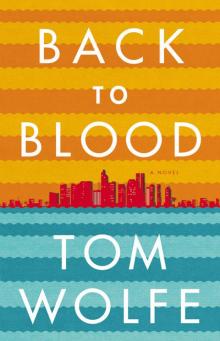 Back to Blood
Back to Blood The Painted Word
The Painted Word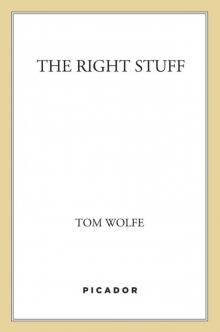 The Right Stuff
The Right Stuff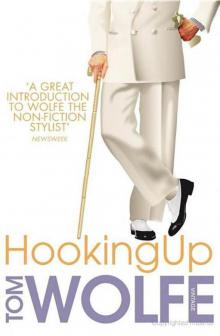 Hooking Up
Hooking Up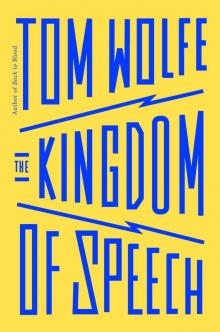 The Kingdom of Speech
The Kingdom of Speech The Bonfire of the Vanities
The Bonfire of the Vanities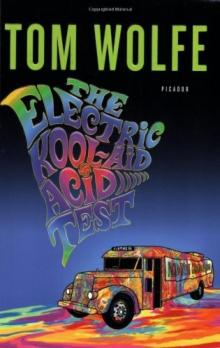 The Electric Kool-Aid Acid Test
The Electric Kool-Aid Acid Test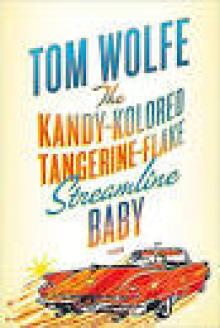 The Kandy-Kolored Tangerine-Flake Streamline Baby
The Kandy-Kolored Tangerine-Flake Streamline Baby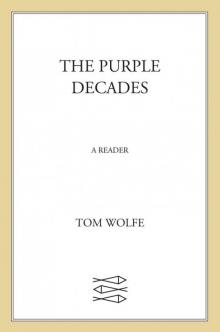 The Purple Decades - a Reader
The Purple Decades - a Reader Back to Blood: A Novel
Back to Blood: A Novel The Purple Decades
The Purple Decades